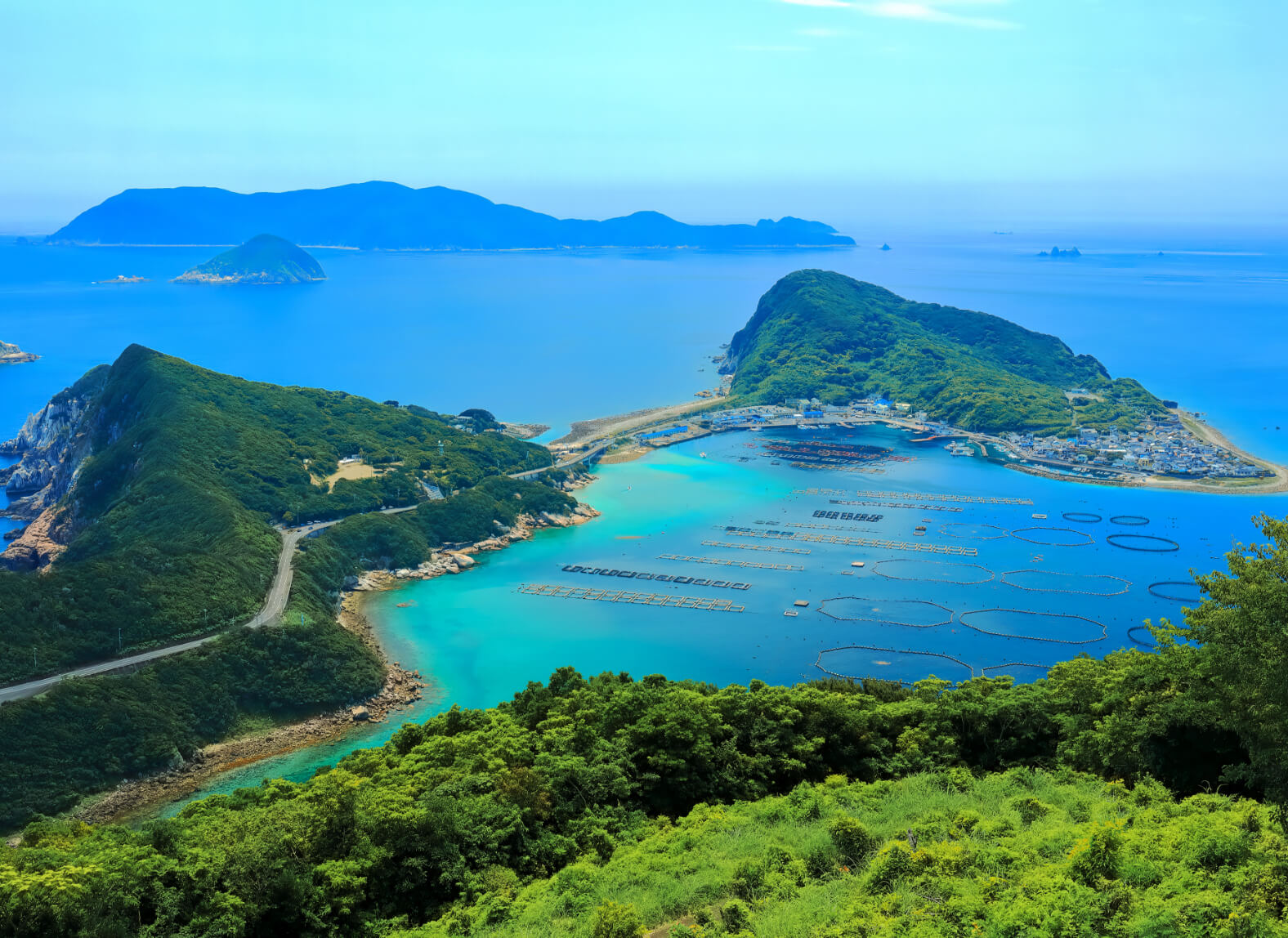
Kashiwa Island
Kashiwajima Island is located at the tip of Otsuki Peninsula jutting out into southern Sukumo Bay and is connected with the peninsula by two bridges. Crystal clear emerald green waters, making the island look like a “ship floating in the air”, created a buzz and it became a popular tourist attraction. Since it faces the confluence of the Bungo Channel and the Kuroshio Current, it is also believed to be inhabited by one third of the fish species living in Japanese sea waters, and is known for prime diving sites all over the world. In the area surrounding Kashiwajima Island are locations, such as the foot of the Kashiwajima Bridge, Shirahama Beach and Ryugahama Camp where swimming in the sea is possible, and they attract large crowds in the summer season. The shallow waters where snorkeling and other activities are likewise popular also offer the sight of corals and multi-colored tropical fish. Kashiwajima Island with a circumference of approximately 4 kilometers has around 400 inhabitants. The island streets have a nostalgic twist to them and are perfect for relaxed strolls.
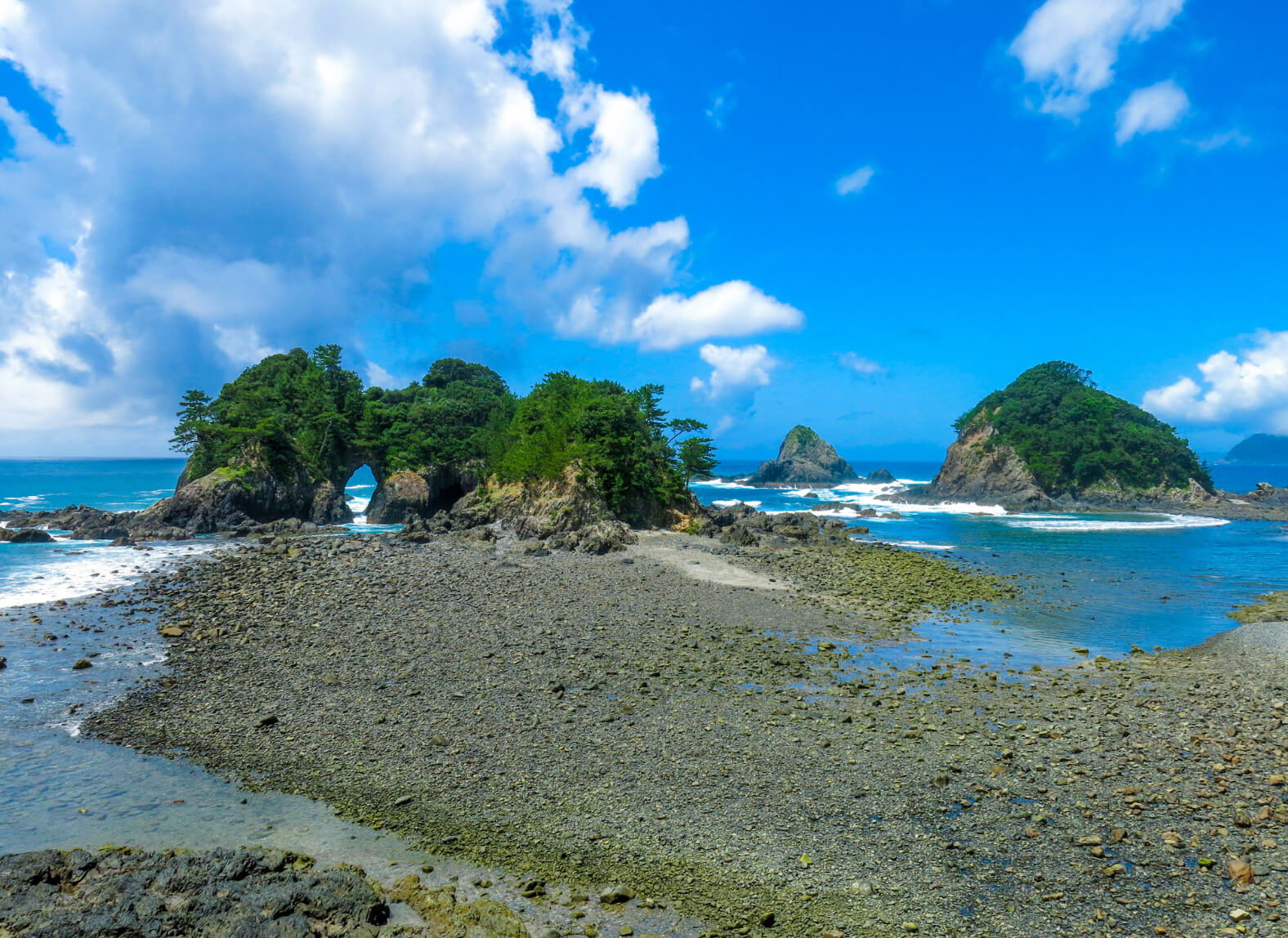
Kashinishi Coast
Kashinishi Coast, a coastal area in the vicinity of Kashinoura, designated as Kashinishi Marine Park, is located approximately 15 minutes by car east from Kashiwajima Island. The feature of Bentenjima Island that can be seen offshore and represents symbolic scenery of Kashinishi Coast is the marine cave located in its center. On the ebb, the way to Bentenjima becomes shallow and the island is even reachable on foot when the tide is low. The surrounding beaches are full of rough pebbles, rocks and reefs, which together with the dotted tidal pools offer an abundance of opportunities for observing sea life, gathering shellfish and crabs, and many other fun ways for spending time at the seaside. Camping and sea kayaking facilities are also available nearby and the marine leisure activities are especially popular. Not only Kashiwajima Island, but the whole area provides enjoyment of seaside attractions to your heart’s content.
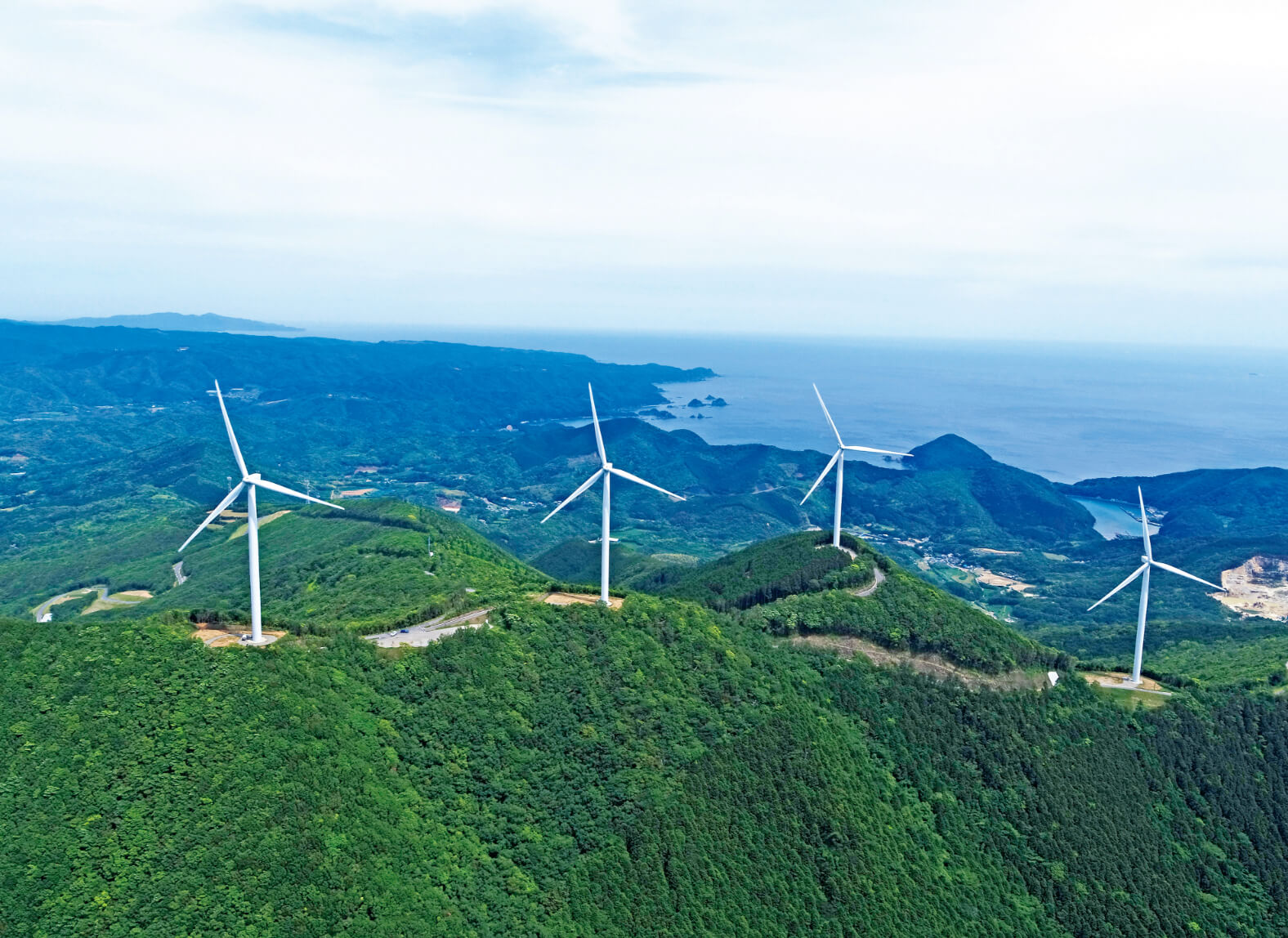
Ohorayama Wind Farm
Ohorayama Wind Farm on the top of Ohorayama Mountain located near the center of Otsuki is a wind power generation facility that started to operate in March 2018. On the ridge of the mountain peak 11 wind turbines stretch in a row over a distance of 7.5 km. Usually, it is not possible to approach them, but periodically there are days when the wind turbines can be observed from close proximity. On such a special day, one can indulge in the hillside panorama and the vast ocean spreading before their eyes from the mountaintop. Additionally, this new highlight of Otsuki, the wind turbines are also very memorable when seen from the foot of the mountain or from the sea.
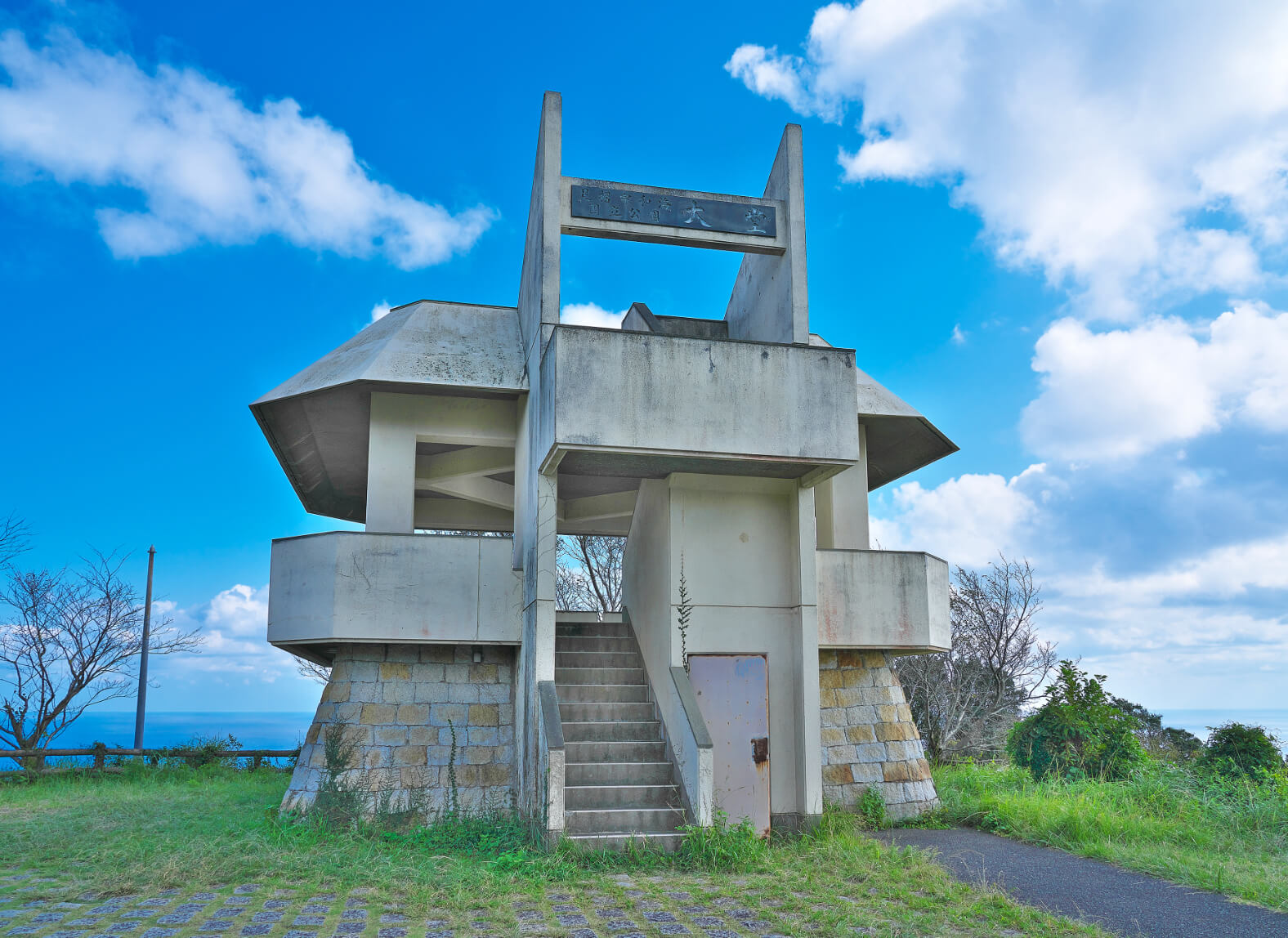
Odoyama Observatory
Observatory on the top of Odoyama Mountain on the Odo Coast on the way to Kashiwajima Island. Odoyama Mountain is higher than the surrounding mountains, resulting in this observation site’s spectacular 360-degree panorama views that include: Odo Coast stretching east with its white rock precipitous cliffs, remote islands of Sukumo, Okinoshima Island and Ugurushima Island, Bungo Channel to the west, and the Pacific Ocean stretching endlessly to the south. Also, the representative scenery of Kashiwajima Island can be seen from here spreading below your eyes, which is why this observatory is one of the places we wish you would certainly visit on your trip to Kashiwajima Island. Additionally, between the observatory and the Kannon-iwa Rock there is a promenade, where beside enjoying the views of precipitous cliffs while strolling, you can also stop over at the Odo Monkey Park and might even encounter wild apes living there if the timing is right.
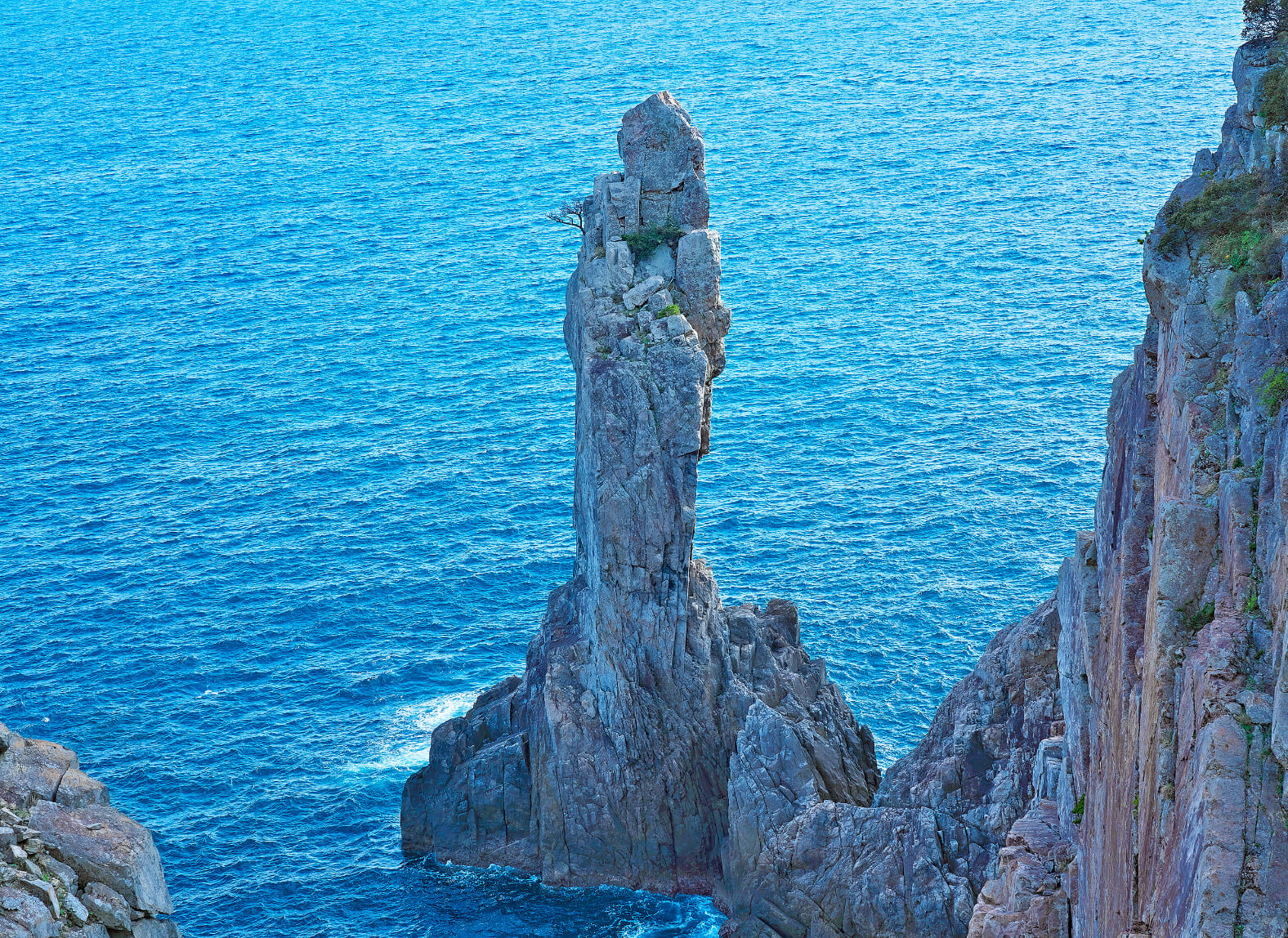
Kannon-iwa Rock
Kannon-iwa Rock standing at the Odo Coast just in front of Kashiwajima Island. The granite rock with a height of around 30 m received its name for resembling Kannon Bosatsu, since the image rising from the sea looks just like the Goddess of Mercy. There is a legend surrounding this figure saying that in ancient times it reflected an image of a ship sailing offshore. The figure standing below the rough cliffs inspires everyone with mystical sensations. Kannon-iwa Rock is easily accessible since it visible near the beginning of the promenade connecting the prefectural road and the Odoyama Observatory. Also, the town cruise experience likewise offers abundant possibilities to enjoy the powerful sight of the towering Kannon-iwa Rock from sea.
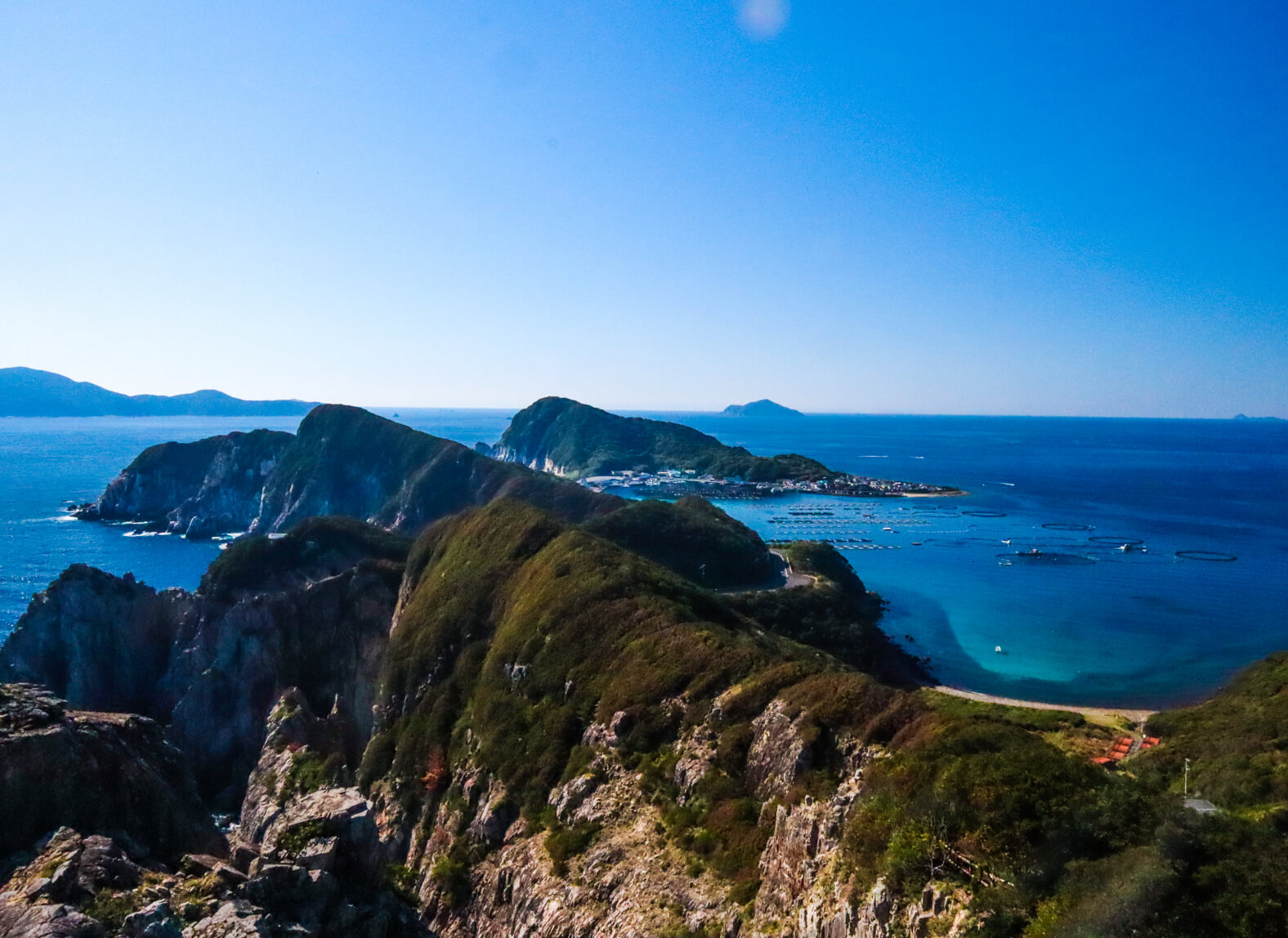
Oman-no-taki
Even if Oman-no-taki is called a waterfall (taki), it is not actually a waterfall of flowing water, but its name originates in this area’s appellation of cliffs as “waterfall”. And there exists a sad story where this location’s name derives from. In Edo Period, a blind beauty called Oman fell in love with a man called Shimamori. But it is said she threw herself off a 120 m high cliff, when she became a nuisance in work duties of the man she loved. Lamenting this sad story, these cliffs became known as Oman-no-taki. Oman-no-taki is located just east of Kannon-iwa Rock and can be viewed from the promenade.
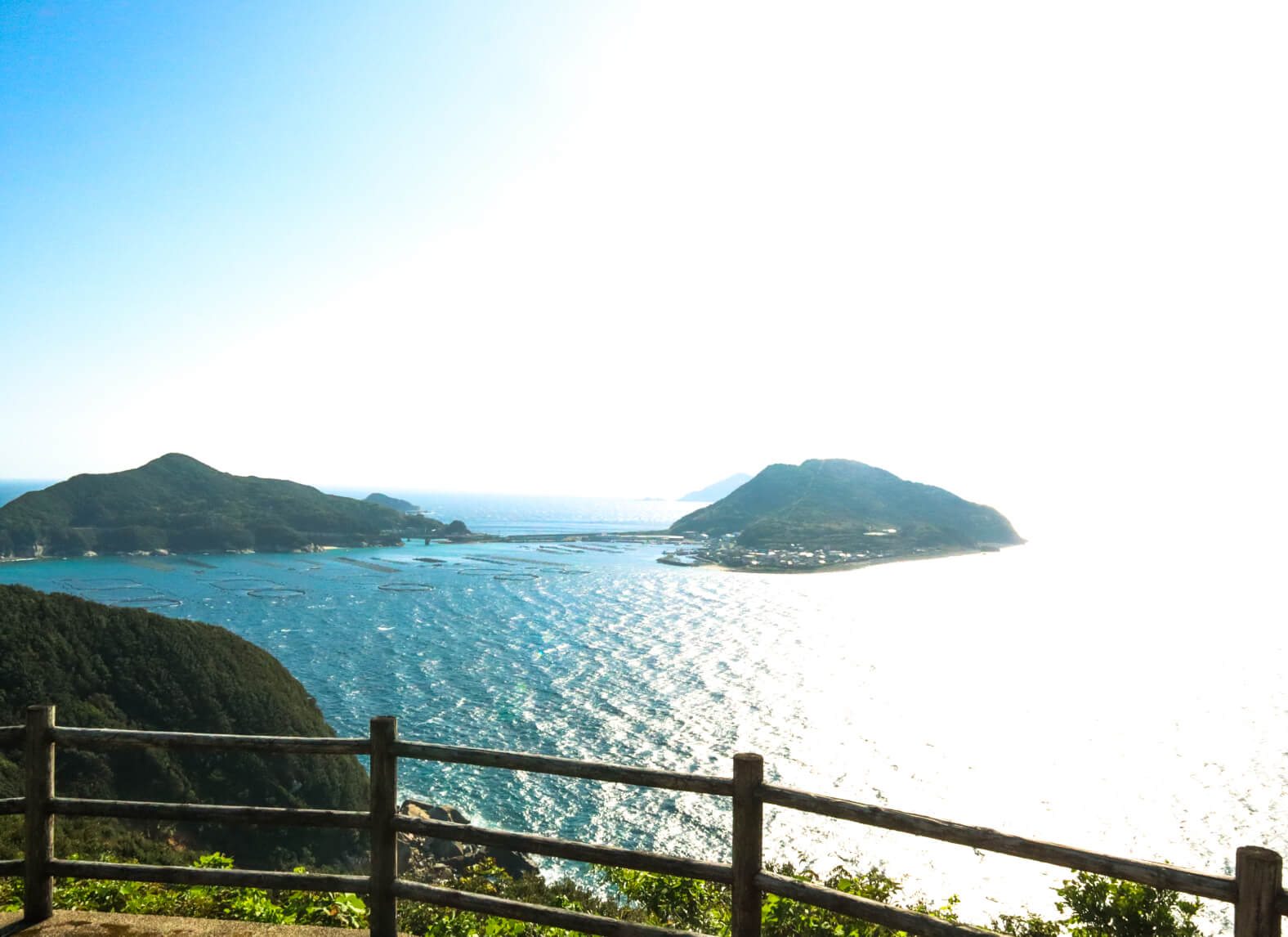
Issai-toge Rest Area
Observatory and rest area on the old road in the direction of the Issai District fishing port, slightly distanced from the prefectural road No. 43 leading to Kashiwajima Island. The ultimate scenic spot offering exquisite views of Kashiwajima Island just like Odoyama Observatory. The pavilion observation platform offers the views of Kashiwajima Island, and Koshima Island, Biroto Island, Okinoshima Island, Ugurushima Island and other remote islands, which seem just like overlapping with Kashiwajima Island, the Pacific Ocean just before your eyes. Despite its slight distance from the prefectural road, this place is so much more than a rest area. The spectacular views it offers will not disappoint anyone who invests just a little more additional energy to reach it.
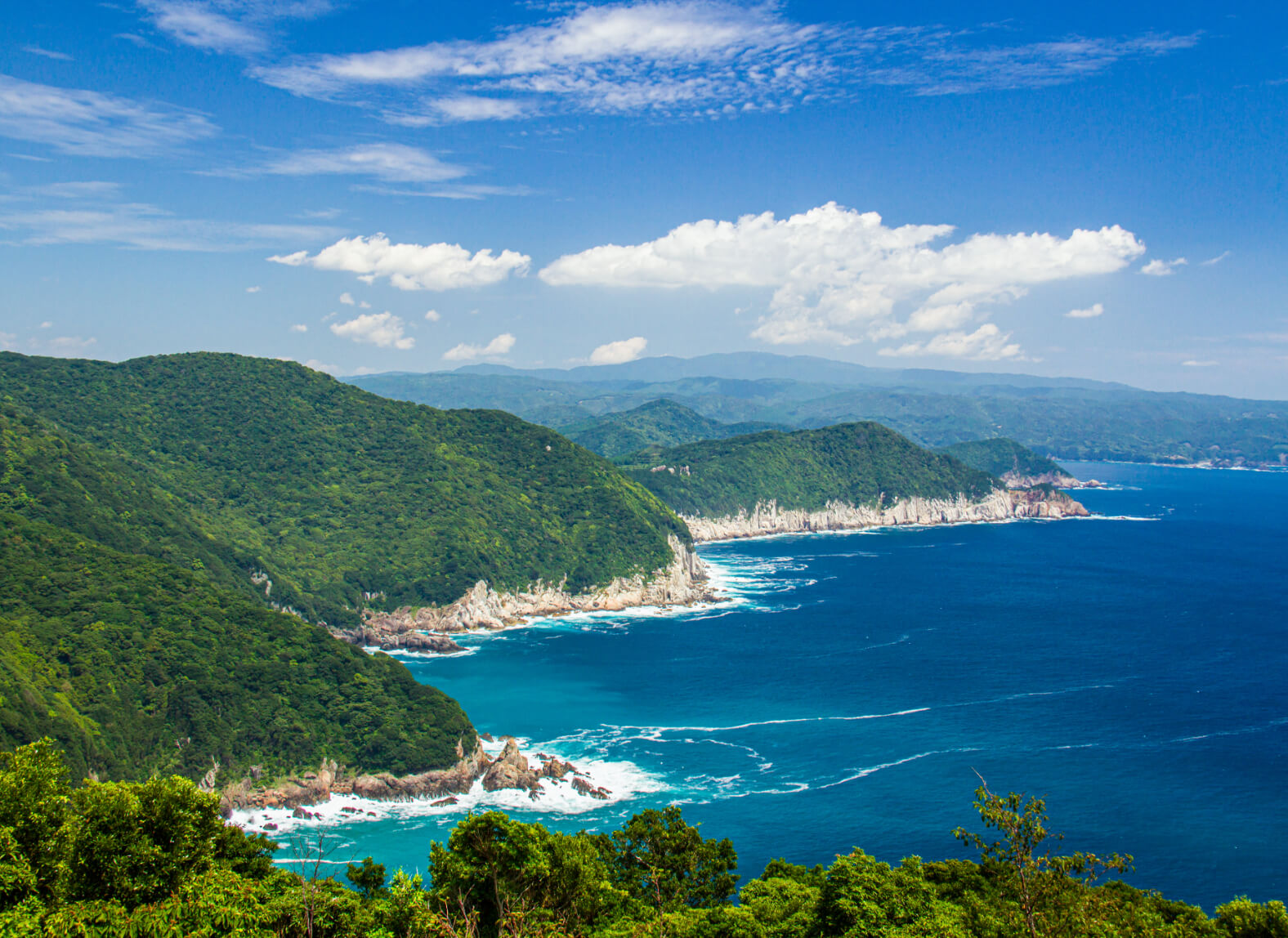
Ashizuri-Uwakai National Park
Ashizuri-Uwakai National Park is a general appellation for the park of national significance comprising of groups of tourist attractions, such as scenic spots and marine parks, centered around the coastline area stretching from Cape Ashizuri in Kochi Prefecture to Uwa in Ehime Prefecture. In Otsuki, Kashinishi Coast is designated as a marine park comprising, firstly, of scenic spots such as the Kashiwajima Island and Odo Coast. Each of these locations - let it be a beautiful scenic spot evoking the magnificence of nature, or a natural habitat sheltering a wide variety of fish and coral reefs - shoulders an important role of being one of the tourist attractions that create the charm of Ashizuri-Uwakai National Park.
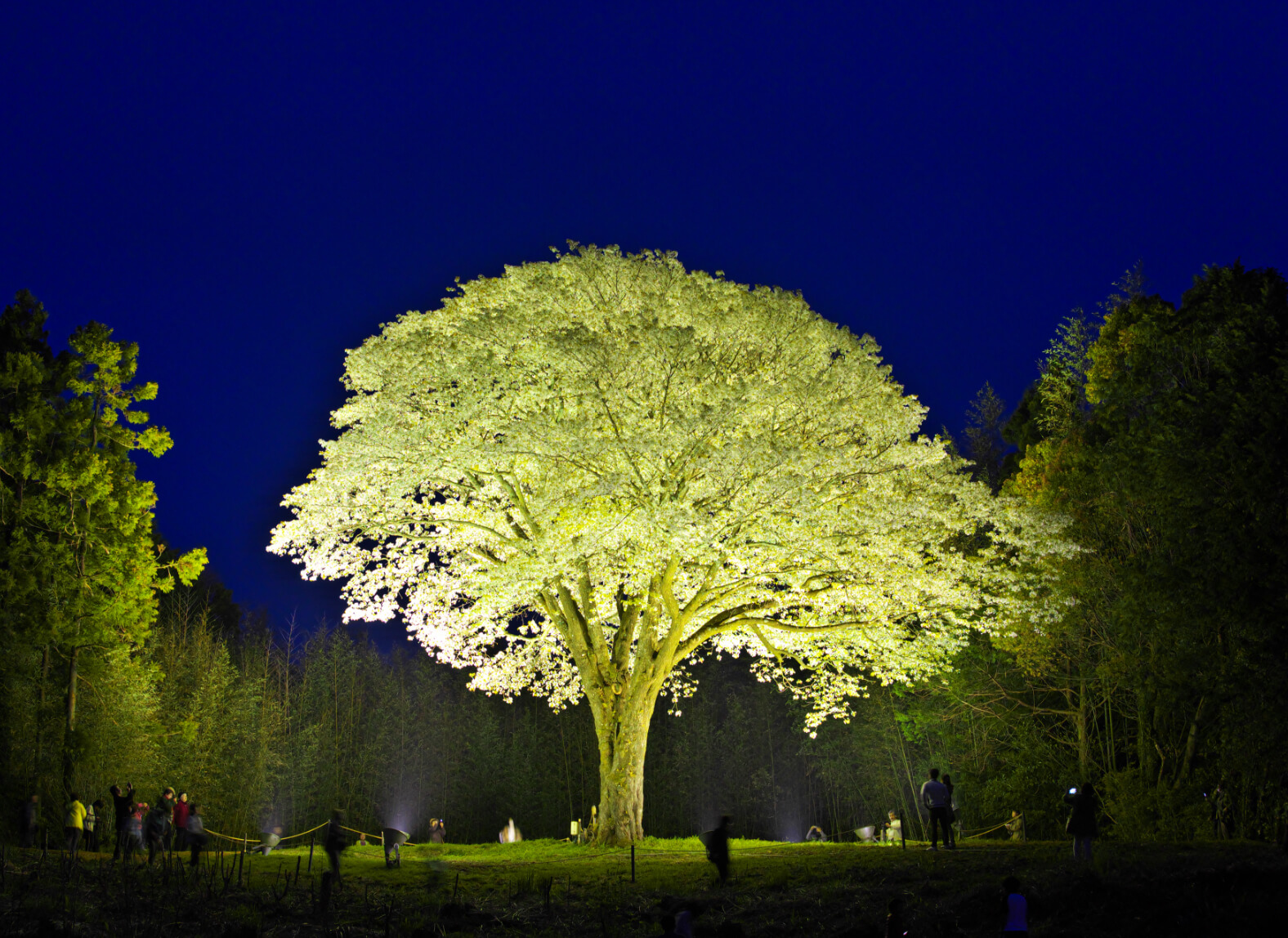
Gekko-zakura Cherry
Gekko-zakura Cherry, a single cherry tree growing on a hill in Nagasawa District not far from Otsuki city hall. This is a legendary cherry tree known to “fully bloom at full moon”, and is said to have been extensively researched by the renowned botanist, dr. Tomitaro Makino, who aspired to have it registered as a new species called “ashizuri-zakura”. When the flowers bloom, its petals are perfectly white and radiate an especially enchanting gloss. During the peak bloom period from end of March to beginning of April, the Gekko-zakura Cherry is lit-up, thus providing an actual experience of an imaginary fantastic bloom. Furthermore, during this period, several events and the night cherry music festival are held to liven up the hanami, the cherry blossom viewing experience even more. Besides the wonderfully blooming petals, the giant tree shape itself, with branches extending in all four directions from the large trunk - with a diameter of 1 m - is also a real eye-catcher.

Kumogatsuji Park
“Kumogatsuji Park” is located on a hill in the Amaji district northeast of Kashiwa Island. It is a park that was developed with the completion of the work “ Kumogatsuji” by a sculptor who was active around the world, such as the works being permanently preserved at the Museum of Modern Art, New York. “ Kumogatsuji” was created with the wish of the requiem to the war dead who were departure of students for the front. Unlike the scenery of the violent cliffs, the location that overlooks Kashiwa Island and Sukumo Bay in the distance makes the appearance of a calm atmosphere attractive.
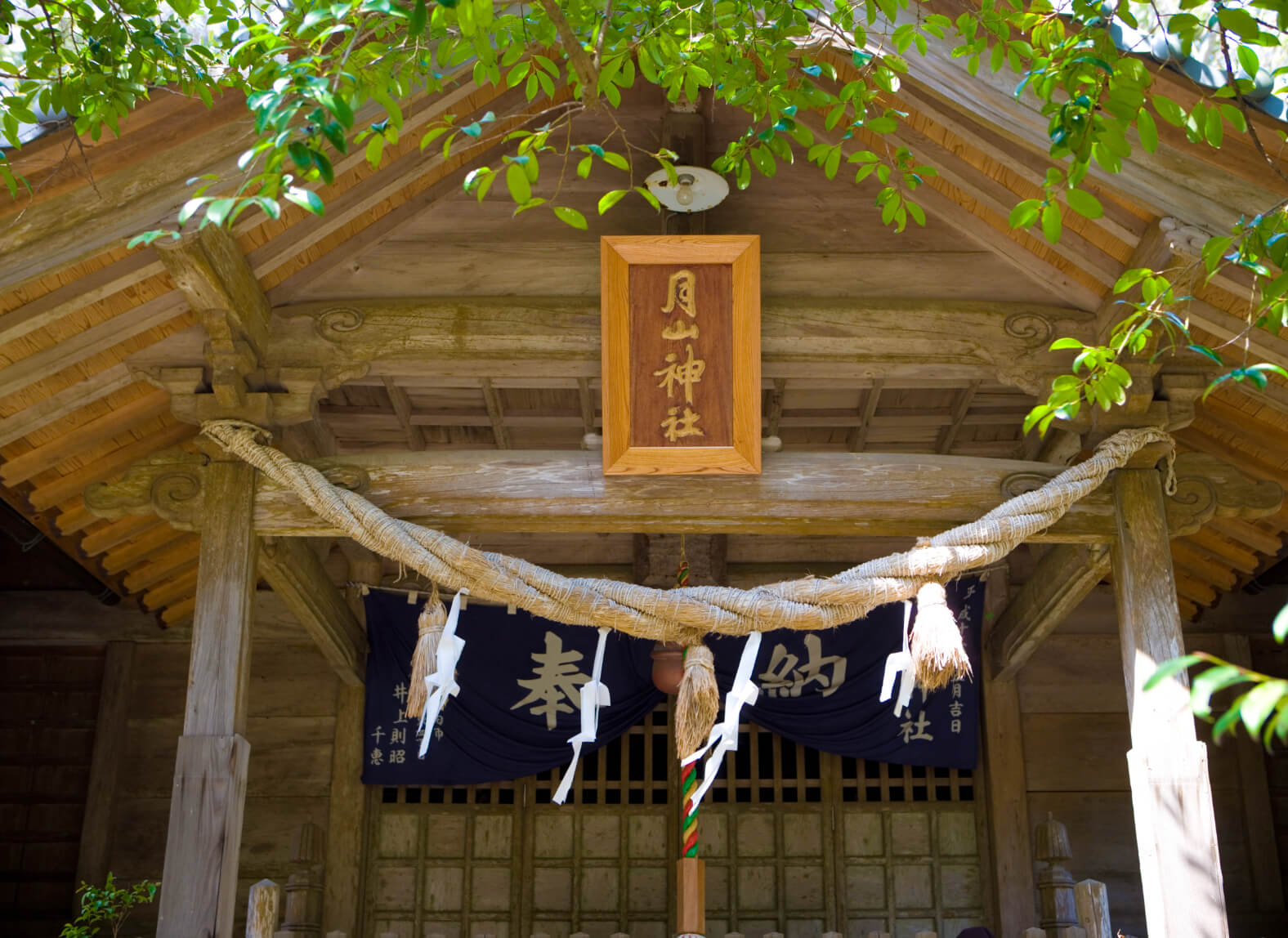
Tsukiyama Jinja Shrine
Originally, it was called Shugetsuzan Gekkoin Nansho-ji Temple and was considered as a holy spot of both, Buddhist and Shinto deities, but was renamed to Tsukiyama Jinja Shrine in the Meiji period. The name Tsukiyama originates in the shrine’s object of worship, which is a crescent-shaped stone, as well as in Tsukiyomi Okami deity, who was revered here. As a guardian shrine of Otsuki coastline and as an additional temple of the 88 Shikoku Sacred Sites Pilgrimage, this shrine is always full of worshippers. On the temple grounds, there are the Main Hall, designated as a historically important site of Otsuki, and Daishi-do Hall built in 1858 (Ansei 5). The Daishi-do shelters the ceiling paintings believed to have been authored by Ekin, Shoryu Kawada, Miyata and other painters of the end of the Edo period through the early Meiji period.